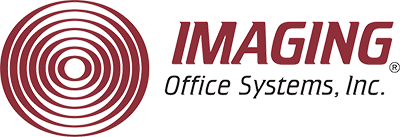A company’s most important investment is its people and you have to have a good employee onboarding process. The cost of employee turnover is exceptionally high. In fact, a company can spend between 16-20% of an employee’s annual salary trying to replace them! That’s why so many companies are investing in technology that will enhance the first impression and streamline the HR onboarding processes that are proven to increase retention.
If you’ve only got (on average) 30 days for new hires to decide if their job has long-term potential, you can’t waste the investment on out-of-date processes, disorganization, or inaccuracies.
Even before walking through the door on day one, a new employee interacts with many people and departments within your business. It’s easy for him or her to quickly assess your company’s level of organization—or lack thereof. Read on for three steps to you can take to start improving the employee onboarding process.
1. Increase visibility by centralizing your information.
Onboarding files and data can be captured at the source into a single system with minimal human interaction, providing HR managers with a universal view of the entire onboarding process. This will allow your personnel to better identify bottlenecks in the process and respond or follow up accordingly, ensuring onboarding is completed accurately and in a timely manner. When everything is connected, you can eliminate the problem of juggling multiple applications to find what you need, when you need it.
2. Take more accountability and demand more control.
What happens in your organization after a signed offer letter is received? Is it the same process every time? Does every person involved know the next steps in the handoff or  interaction with internal business groups? How fast is this process for a new hire?
interaction with internal business groups? How fast is this process for a new hire?
If your onboarding process is manual, you are risking costly leaks in due process and lack of control. An ECM system automatically generates multiple checklists based on the new employee’s specific role or department, assigning checklists to the appropriate departments for fulfillment.
Think about the amount of resource time this reduces by eliminating the manual nature of the process!
3. Ramp up efficiencies and ensure greater accuracy.
The last thing you want is for a new hire to arrive on his or her first day and feel as though you were ill-prepared for their arrival. That all-important first impression relies on the new employee feeling comfortable and equipped to do their job as soon as they walk through the door.
An ECM system empowers HR to better serve new employees with a positive first experience. By effectively monitoring the status of the onboarding process each step of the way, it allows personnel to better equip new staff with the tools they need to positively contribute to the company from their first day on the job.
Improving the employee onboarding process is the first step to improving your investment in employees. Consider the ways you can close the glaring gaps in your process by using an automated electronic content management system.
